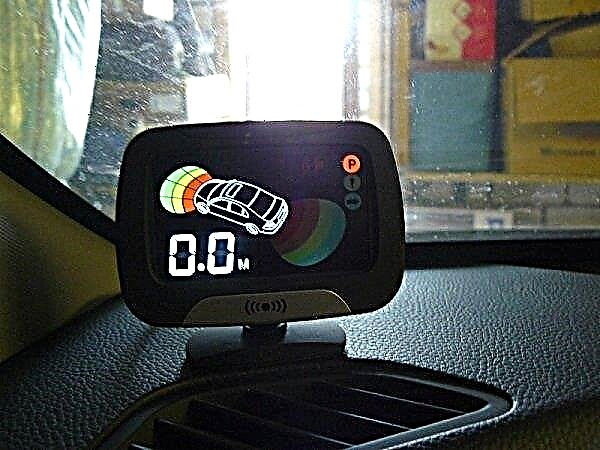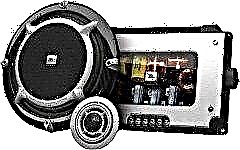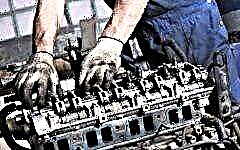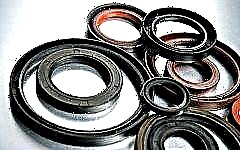

The content of the article:
- Oil seals - what they are and what they are for
- What materials are oil seals made of
- How to choose oil seals
- How to replace the crankshaft oil seals
- Gland sizes
Sooner or later, every car owner is faced with the need to replace certain parts of the car. That is why it is extremely important to have at least a minimal amount of information about the car's device, its main elements and, of course, consumable components.
One of these details is the oil seal, the choice of which many car owners approach "slipshod", considering this element secondary and not worth close attention. In reality, the oil seals are of great importance for the correct and trouble-free operation of the vehicle.
In this article we will try to talk about what oil seals are, why they are needed and how to choose them correctly.
Oil seals - what they are and what they are for

Oil seals are a special element used in the machine to seal the connections of various elements and rotating parts, operating on the principle of reciprocating action.
The main task of the oil seals is to ensure complete sealing of the joints of the moving and non-moving parts of the car, protecting them from various negative influences and preventing the leakage of the lubricating fluid.
Oil seals are widely used in engines, transmission elements, steering, transmission, cooling and other systems, so it is not surprising that they need to be replaced from time to time.
What materials are oil seals made of

To date, manufacturers use materials for the manufacture of oil seals:
- Butadiene rubber (NBR) - a material of average cost, which can be used at temperatures from minus 40 to plus 120 ° C and has good resistance to most types of fuel and lubricating components.
- Acrylate rubber (ACM) - the cheapest material, suitable for use at temperatures from minus 30 to plus 150 ° C and usually used for the manufacture of hub seals.
- Silicone (VMQ, MVG, ECOSIL) - a fairly popular material that has a low cost, but has a number of disadvantages, including chemical instability to certain types of mineral oils.
- Fluoroplastic / fluoroelastomer (FPM, FKM) - a widely used material from which oil seals are made for such elements of power plants as a camshaft, oil pump, crankshaft and much more. Among the main advantages of this material are resistance to most types of oils and chemical liquids, as well as excellent mechanical resistance. Its operating temperature range ranges from minus 40 to plus 180 ° C.
- Teflon (PTFE) - a rapidly gaining popularity material, which is facilitated by its high resistance to any chemically active liquids, the lowest friction rate and the largest operating temperature range (from minus 40 to plus 220 ° C). Even if the oil seals of this material have the highest cost, they provide minimal wear on the rotating elements of the motor.
It should be noted that the installation of Teflon-coated oil seals has its own characteristics - they must be installed exclusively on a clean and dry shaft, using a special plastic ring.
Special attention should be paid to the fact that manufacturers, in order to improve the technical performance of oil seals, use specialized additives... Such products have separate markings (Viton, Aflas, Dai-El, etc.).
How to choose oil seals

The easiest way to make the right choice is to purchase original oil seals from an authorized dealer. In this case, a specialist will select a product that exactly matches the make and model of your car.
If you decide to buy an analogue, you need to consider several aspects of the choice:
- The product must be suitable in size, while it is allowed (although not recommended) the use of oil seals, the width of which is slightly smaller than the original ones.
- The new oil seal must be designed for use in the same environment as the old product (for example, for antifreeze or oil).
- The sealing device must be designed to work in the appropriate place of its installation temperature conditions.
- The analogue must have a design corresponding to the original product (for example, have identical notches on the sealing ring, etc.).
Special attention should be paid to the presence of an anther or cutting, where the first is designed to protect the part from the effects of dirt and dust, and the second is to act as a pump that dumps oil back.
In addition to technical features, when choosing oil seals, you need to pay attention to the cost and manufacturer, giving preference to proven and popular brands and products of average market value. Otherwise high risk of running into low-quality products, which can not only quickly fail, but also entail the emergence of new troubles that promise large financial costs.
Important: It is highly discouraged to use domestically produced oil seals on foreign cars, since the material and workmanship of such products still leaves much to be desired. But the installation of foreign-made oil seals on domestic cars is, on the contrary, recommended.
Oil seal brands: which brands to give preference to

As mentioned above, when choosing oil seals for your car, it is better to give preference to proven manufacturers that have been on the market for a long time and have positive reviews. These include brands such as VAG, Goetze, Payen, Emmtec, SKF, KOS and Koyo.
When choosing oil seals by size, it is customary to take into account three parameters:
- d - inner diameter;
- D is the outer diameter;
- h - height / thickness.
The inner diameter of the glands can vary between 4-270 mm, the outer diameter between 7.8-310 mm, and the height between 1.5-30 mm. However, there are oil seals that have unique product parameters that differ from the "standard" parameters.

In the photo: parameters of the crankshaft oil seals
The price of oil seals, depending on the size, country and brand of the manufacturer, as well as the place of destination, can fluctuate between 50-2500 thousand rubles. (22-1100 UAH). It should be remembered that the original oil seals in most cases are 30-60% more expensive than their counterparts.
So, the cost of the original rear crankshaft oil seal for Renault (Dacia) Logan averages 1550-1600 rubles. (about 680 UAH), while its analog can be purchased at a price of 650-700 rubles. (about 310 UAH).
Is it worth overpaying for a brand
Given the presence of a large number of analogues, many car owners have a completely logical question - do they need to overpay for the brand? The answer is necessary, since larger manufacturers invest large financial resources in the development and testing of their products, which makes them much more reliable and durable. In addition, large “players” monitor their reputation, which is known to be one of the key factors influencing the number of product sales.
Another question is whether it is worth overpaying for original oil seals - it is not worth it, since today there are a huge number of analogue products on the market, the quality of workmanship and reliability of which is not only not inferior to the original, but also surpasses them.
How to replace the crankshaft oil seals

In the photo: replacing the crankshaft oil seals on the VAZ 2107
Replacing the crankshaft oil seals is a time-consuming procedure and, accordingly, quite expensive, however, even with minimal experience, they can be replaced independently. For this you will need:
- Keys and screwdrivers;
- Special key designed to adjust the timing strap;
- Graphite grease or antifreeze;
- Capacity with engine oil;
- Heat resistant sealant;
- Consumables (oil seals).
Before proceeding with the process of replacing the oil seals, you need to de-energize the car (in other words, remove the terminals from the battery) and drain the engine oil. Next, consider the procedure for replacing the front and rear oil seal.
Replacing the front crankshaft oil seal
The process of replacing the front oil seal is carried out in the following sequence:
- We dismantle the pulleys;
- Remove the protective cover of the timing belt (if available);
- Dismantle the toothed belt;
- Remove the drive gear pulley;
- We dismantle the front oil seal with its subsequent replacement with a new product.
Immediately, we note that before installing the oil seal, engine oil is applied to its sealing edge, and sealant is applied to the upper, lower and beveled edges. It is also necessary to thoroughly clean the oil seal seat, otherwise there is a high risk of premature wear and, accordingly, replacement of the crankshaft.
Rear oil seal replacement
The procedure for replacing the rear oil seal is somewhat more complicated and requires a viewing hole. Some craftsmen get by with a jack or, in its absence, special props, but this is extremely unsafe and we categorically do not recommend using this method. The very process of dismantling and replacing the oil seal is carried out in the following sequence:
- Dismantling the gearbox;
- Removing the clutch;
- Removing the "old" oil seal;
- Installing a new product (do not forget about cleaning the seat).
The assembly process takes place in reverse order.
Important: During the replacement of oil seals, we carefully monitor the correctness of its installation. It is not uncommon for the inner side of the stuffing box to bend, which subsequently leads to repeated leakage and repeated replacement of the stuffing box. In addition, if there was a bend, the use of even an unused product is not recommended, as this is fraught with a loose fit of the oil seal to the landing site on the crankshaft.
Gland sizes

Although manufacturers may manufacture seals to different standards and materials, they are all identical in size and configuration. This means that the oil seals for a certain part, but for different brands and models of cars, will have the same parameters in height, as well as in the outer and inner diameters.
True, it is worth noting that some manufacturers of products, in order to designate their uniqueness, produce oil seals of non-standard sizes, having decimal places in their parameters (for example, 49.2 x 33.2 x 9 mm).
Currently, most online stores selling oil seals offer customers interactive tables that allow them to choose the original oil seal or its analogue, based on parameters such as the make, model and year of manufacture of the car.
Conclusion
If you cannot or simply do not want to understand all the intricacies of choosing oil seals and other consumable components for a car, it is better to entrust the choice to professionals - so you can save not only your time and money, but also your nerves.











